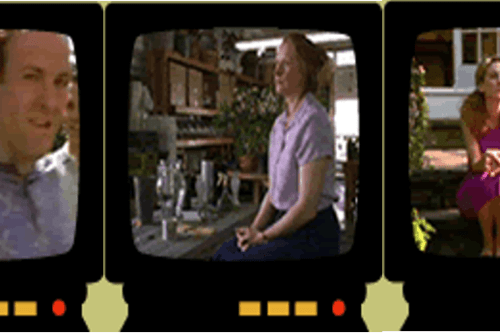You are intrigued by Antarctica’s geopolitical exception—its lack of indigenous people and its never-nationalized status under the 1959 Antarctic Treaty System. I see this reflected in the way the title of your installation playfully echoes the title of a 1981 novel by John Calvin Bachelor, The People’s Republic of Antarctica. Do you see Antarctica as an exception to global politics? What vision of propaganda and history inspired the “Manifesto for a People’s Republic of Antarctica” installation, the marvelous poster series in particular?
As Edward Bernays (Sigmund Freud’s nephew and coiner of the term “public relations”) knew, 20th century advertising was the hidden architecture holding capitalism and communism together. Everyone had to get their message out. Whether it was Stalin who said that “engineers are poets of the soul” or Chairman Mao, who put teachers in chains and paraded them as false prophets, this kind of stay-on-message-type ethos dominated the media discourse of every nation.

With my print design and film projects, I simply ask the question: what if the nation state went away? What centrifuge would we all then call home? What would be the point of looking at the state as a kind of generative architecture? Who would be commissioning the designs, who would be fostering the arts? The answer: corporations. I use the ironic motif of propaganda from the British East India company and some of the corporate sponsorships of exploration/high endurance sports as examples.
The revolution for the U.S. after the fall of the Berlin Wall was untrammeled capitalism. Look around and see what it’s done for us! The only competing ideology at this point is radical Islam. I’m not so sure that people would like to embrace Sharia economics, but if they look at the Middle East, there’s lots of solid banking going on (unlike Wall Street this week). I guess you could say that my work is kind of an aesthetic futures market where any sound can be you; that’s what sampling is about. The Terra Nova and “Manifesto for a People’s Republic of Antarctica” projects are mirrors held up to a world that is melting. I don’t know about you, but I think it’s a pretty strange mirror to see oneself in. I read John Calvin Bathelor’s book and enjoyed it, but aside from “sampling” the title (I do this a lot!), there’s not much of a connection, except that his book is a meditation on the end of norms of governance.
I’m struck by the influence of Al Gore’s documentary, An Inconvenient Truth, on subsequent representation of the Antarctic. Most reporting on Antarctica these days tends toward the catastrophic: ice melting, penguins starving, and now oil prices so high that scientific research programs themselves are financially threatened with extinction. And much of this reporting relies on how it’s communicated graphically—I’m thinking in particular of the computer simulations of melting ice sheets in a pristine and remote Antarctic and the resultant rises in sea levels of urban locations. Do you see your work in such a context of politicized—or catastrophic—simulation? What’s your main message amid this noise?
I always try to get people to think about conceptual frames of reference: context is important in my work, and so is content. How do you establish an uneasy tension between context and content when everything can be remixed and changed, and there’s no final “version” of anything? In my film Terra Nova, that kind of graphic design imprint is crucial to how the story is told. If you look at the early arctic expeditions led by Ernest Shackleton and Robert Scott, you can only think: wouldn’t it have been great if they had satellite footage to tell them they weren’t that deep into the ice, and to compare some different routes to get out of the drift their ship was caught in?
In his infamous The Worst Journey in The World, Apsley Cherry Garrad writes: “Polar exploration is at once the cleanest and most isolated way of having a bad time that has ever been devised.” I think that is one of the most succinct ways one could put this simple observation. Melting ice sheets look cool, but then again, so do solar flares on the surface of the sun. They’re both harmful . . . but hey . . . art makes things look cool.
Terra Nova debuted at the democratic convention in August as part of Dialog:City, in Denver. Barack Obama presumably saw it. What would you like him to see, to respond to, and to promote in his election platform (and possible administration)?
I really think it’s time to say goodbye to the 20th century. So yes, having the convention as a focal point for the contemporary art scene was a breath of fresh air for me. I really liked premiering my film at the Denver Opera House. The Colorado art scene is a lot more progressive than the one in New York!
I think Obama will probably be one of the greenest presidents since Jimmy Carter put solar panels on the White House. The Republicans went crazy, but in hindsight, it was really, really, really cool. I think of Terra Nova as a reflection site—a location for the politics of perception that we use to look at the environment.



